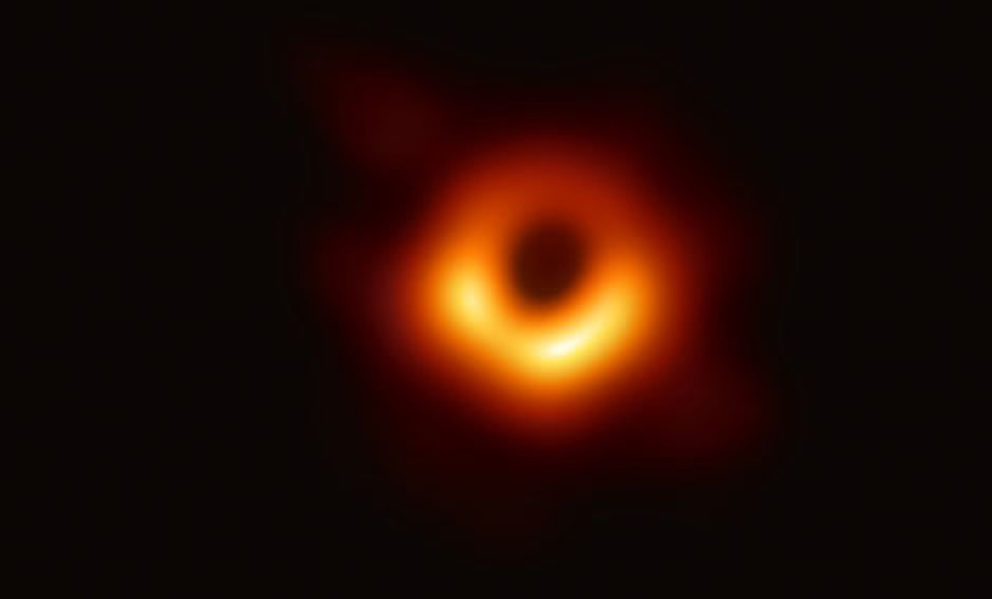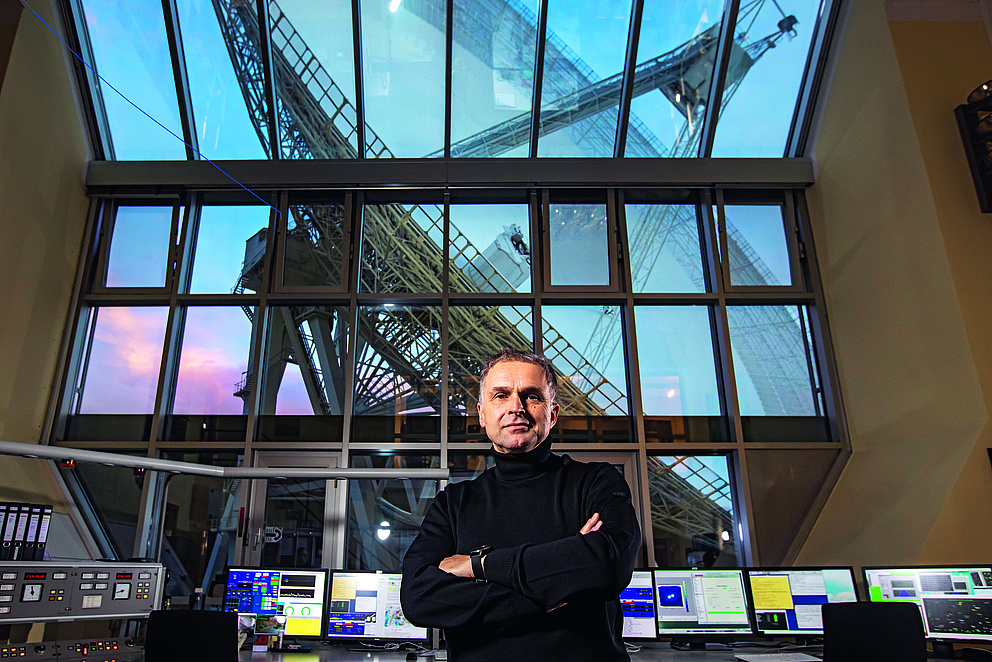
Contact
Press, Communications and Marketing
Tel.: +49 228 833-144
Fax: +49 228 833-441
presse[at]avh.de
Radio astronomer Anton Zensus talks about the first image of a black hole
It was one of the year’s most epoch-making breakthroughs: the first image of a black hole. Humboldtian Anton Zensus is the Chairman of the Board of the Event Horizon Telescope Collaboration, the team of researchers that has worked together for more than 20 years to create this image. The group can now post yet another success: On 3 November, the team will receive the “Oscar of Science” ‒ the 2020 Breakthrough Prize in Fundamental Physics ‒ for its ground-breaking work. We asked Anton Zensus what a black hole actually is and what kind of waves the image made in the science world.

Humboldt Foundation: Mr Zensus, what was the first thought that went through your mind when you saw the image of the black hole?
Anton Zensus: I first thought: Something is wrong here. This must be a simulation. But in fact it was our measurement data that produced this indisputable result: There is a dark area in the centre of the picture ‒ the image of the black hole. This moment was the culmination of many years of hard work. I had to smile to myself: Eureka! We've found it! Relief, elation, excitement ‒ all sorts of emotions were in play.
Humboldt Foundation: In September you learned that your ground-breaking discovery was selected for the 2020 Breakthrough Award in Fundamental Physics. How many years of research work culminated in this photo?
Anton Zensus: Our measuring technology was developed in the 1960s. Back then, no one thought it would be possible to achieve such a thing. Since 1997, the year I was appointed director at the Max Planck Institute for Radio Astronomy, it subsequently became clear that the event horizon of a black hole could also be photographed using short wavelengths. And then we worked with full steam toward achieving this. Today, 22 years later, we have reached that goal.
We were overwhelmed by the widespread response that our research sparked.
Humboldt Foundation: What does it mean to you that you have reached such a large number of people with this tremendous result from your research?
Anton Zensus: We knew that our observation was a scientific breakthrough and that the image is very appealing. But we had no idea how much it would capture the imagination of so many people. We were overwhelmed by the widespread response that our research sparked. There were lots of thoughts and feelings such as pleasure over the beauty of the laws of physics that explain the universe. And pleasure over motivating new generations to study mathematics and physics. In addition, it was simply impressive how so many people around the world worked together as a matter of course to produce such wonderful and at the same time important findings. To put it in a nutshell: There was a lot of emotion and excitement, not only for the scientific community, but also for millions of people.
Humboldt Foundation: Can you explain in one sentence what a black hole is? What can be seen on the image?
Anton Zensus: A black hole is an object with such immense gravitational pull that neither material nor information (light) can leave the area. This requires an extremely large, compact mass ‒ in the case of M87, we’re talking about more than six billion solar masses.
Looking at the image, we see hot material that has gathered in a ring around the supermassive black hole. In fact, seen from our vantage point, a large portion of the luminous matter is actually located behind the black hole. Such supermassive objects strongly bend space-time and thus refract light as well. From a certain point onwards, the rays of light orbit around the black hole. That is the ring we see on the image. Within this ring, the light is pulled into the black hole and cannot escape.
We have provided the first visual confirmation that black holes exist.
Humboldt Foundation: Why is this image such a breakthrough?
Anton Zensus: We have provided the first visual confirmation that black holes exist. Up until now we had only indirect evidence. But now we have succeeded in capturing a sharp image. Not only does this image make the black hole visible, it also makes it possible to measure it. We have been able to learn a lot about this black hole’s mass, rotation and magnetic fields. In addition, since this image was made, a number of alternative theories about black holes have been disproven and Einstein’s Theory of Gravity remains confirmed.
Humboldt Foundation: Who was involved in creating this image and what role did you and your colleagues play in it?
Anton Zensus: An international team consisting of more than 200 individuals was involved. They included engineers, telescope operators, experienced astrophysicists for calibration and data analysis, numerical astrophysicists for simulations and so on. With this enthusiastic team it was possible to pull all the pieces of the puzzle together. Our institute and my working group have been especially involved in fitting out the telescope, conducting the experiments, processing data with our high-performance computer (correlator) and in imaging, theoretical interpretation and in supplementary simulations which were necessary to ensure a complete understanding of the physics. In addition I am chairman of the board of the Collaboration and feel myself responsible for the sometimes challenging task of managing and heading a collaboration involving numerous institutions on four continents.
Humboldt Foundation: Has the image generated new impetus for your work? What comes next for you?
Anton Zensus: It definitely has. And that was just the beginning! We are currently working on generating the first image and maybe even a film of the nearest supermassive black hole, which is called SgrA* (Sagittarius A-Star) and is located in the centre of the Milky Way. In addition to this we are measuring the polarised radiation in the area of the black hole in M 87. This difficult work involves technical and methodological challenges. We are also preparing to conduct new measurements in spring 2020 in order to confirm and improve the results we have obtained to date ‒ this time with an enlarged network of telescopes.

